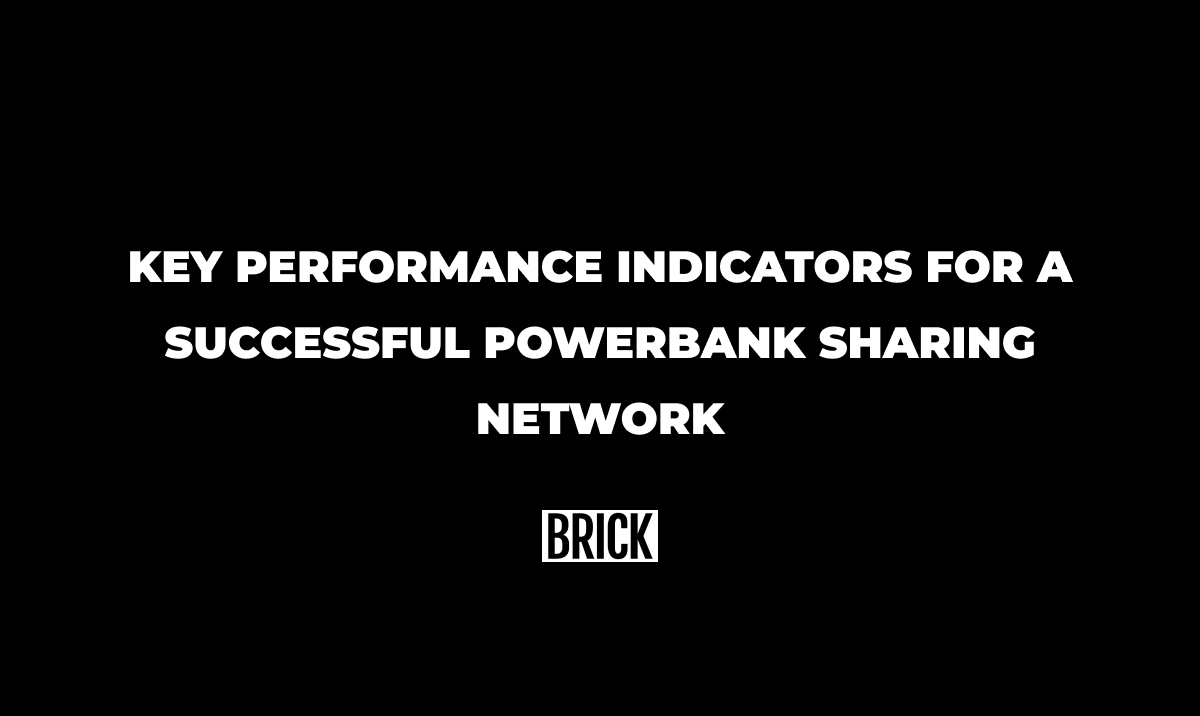The Best Key Performance Indicators for a Successful Powerbank Sharing Network
KPIs are essential for the success of a power bank sharing network. They provide crucial metrics and insights to shape strategies and decisions.

Key Performance Indicators (KPIs) are central to building a powerbank sharing network. Think of them as cheat codes to become successful. They provide metrics to offer insights, and guide strategies and decisions to maximize success. The KPIs used at Brick are available on the Dashboard Snapshot page that partners have access to. All numbers that matter can be found here: rentals, average payments, station data, etc.
Quantifiable metrics to measure performance. Simpler said: goals you work towards. They help identify strengths and weaknesses, generate data for data-driven decisions, and optimize performance.
Start strong with station placement
The placement rate is the first crucial KPI. Kick things off by aiming for 100 stations in the first 100 days. While each market has its unique challenges, from seasonality to competition, nailing this target sets you on the right track. For those playing in smaller markets with fewer stations, aiming for one station placement per day until 100% station placement is the ideal goal. Pro tip? Start chatting with venues while awaiting the station delivery. Use the time to connect with them, and get them excited about the service!
Maximize revenue
Once your network is up and running, it's time to take a deep dive into the cash flow. It's the best indicator to evaluate the station placement. You can evaluate your strategy by keeping an eye on rental activity and understanding which venues are more profitable. Some locations might not be high in rentals, but are amazing for brand visibility - it's still a big win. If a placement is just not working out, move the station to a higher-performing venue. Focus on the venue type that is most profitable in your market to achieve faster revenue growth!
It's important that the stations are visibly placed for the customers and that the staff have been onboarded. When someone asks them to charge their phone, the first thing that should pop into their minds is Brick. Allow free charging for them to get to know and love the service!
Find the sweet spot with a price strategy
The revenue per rental metric is key to optimizing your revenue as it provides a clear view of whether you're charging the right amount, or leaving money on the table. By playing around with pricing at specific stations, you can see what the market is willing to pay. A comparison between two similar venues might reveal if a slight price increase at one does not affect its rental frequency. Once a pricing sweet spot is identified, scale it up and revise your total market pricing model to make that profit!
Expand to high-traffic venues
Once you've got the hang of things, time to go after the bigger fish. Think of high-foot-traffic venues such as malls, airports, conference places, arenas, etc. It can be tricky to get in, but Brick has all sorts of tools to help you get those placements. Not to forget about the global community of partners who are more than happy to help out!
Become a Brick Partner
We receive a steady stream of people who show interest in powerbank sharing with Brick, but it’s those who are willing to put in the effort that are interesting for our partnerships. Are you the one who can take Brick to a new market?




